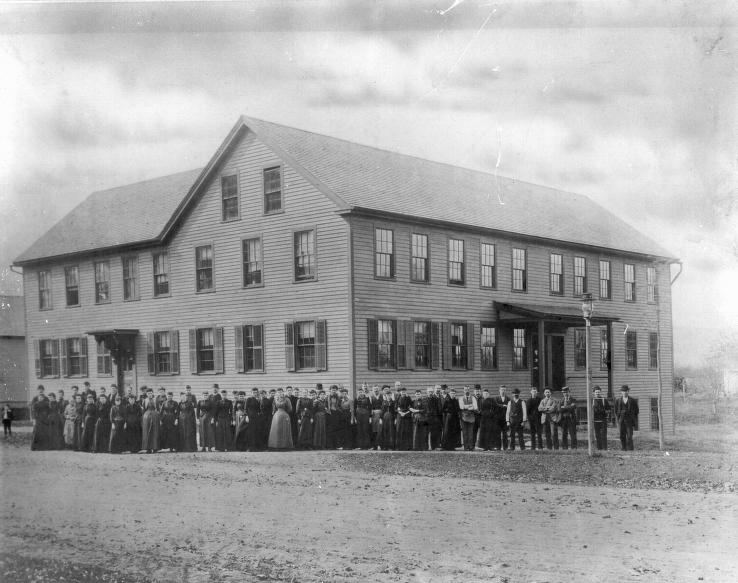|

(c) Pocumtuck Valley Memorial Association, Deerfield MA. All rights reserved.
Gender Roles : A New American Workforce
|
|
Gender still played an important role in determining educational and occupational choices for men and women in the late nineteenth century. At the same time, economic, political and social developments generated increased opportunities for women.
The old belief system that assigned men and women to separate spheres of influence and activity began to break down as more women entered the work force and the public arena. Some observers feared that employers usurped the authority male factory workers supposedly held before they, their wives and their children entered factory employment. The needs of working women helped the suffrage movement gain respectability and momentum in this period. Working women and their supporters insisted that women needed the vote to get legislators to pass laws and reforms that would protect them. The Progressive Movement, the Labor Movement, and the Social Gospel highlighted the social, spiritual and economic needs of working men and women. These movements also provided valuable institutional and organizational experience for many women.
The Arms Manufacturing Company was well known for fine workmanship in the manufacture of all kinds of pocket-books (wallets), billbooks, letter books and card cases. Whether they realized it or not, the men and women photographed in front of the Arms Factory in 1889 were part of a new American work force. Industrialization and the political and social issues it helped produce shaped their experience. More and more women worked outside the home in "non-traditional" occupations. These included factory and office work, as well as working in large retail establishments in larger towns and cities. Many women continued to work on family farms but even agricultural lifestyles were not immune to change. In New England, farming entered a period of decline as competition from other regions mounted and soil productivity decreased. In the midst of these changes, a new group of immigrants arrived from Eastern Europe bringing with them their own agrarian traditions and beliefs about gender roles. Look closely at the people in this photograph. Can you tell by looking at them that they work in a pocketbook manufactory? How do you think the "work clothes" these people wear differ from clothing that is more formal?
top of page
|
Arms Manufacturing Company workers
| photographer Unidentified |
| date 1889 |
| location South Deerfield, Massachusetts |
| height 7.87" |
| width 8.0" |
| height 10.0" |
| width 10.25" |
| process/materials black and white paper print mounted on cardboard |
| item type Photograph/Photograph |
| accession # #1996.12.0044 |
|





